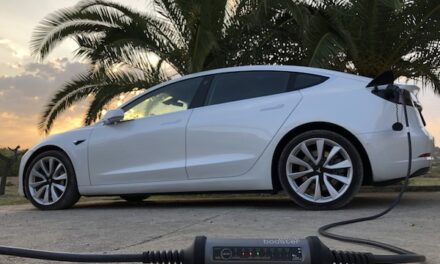- This is evidenced by the 2024 Global E-Mobility Forecast Report presented by Juice Technology, one of the leading companies in the design and commercialisation of charging solutions for EV, and Future Matters, a company specialising in foresight, digital transformation and e-mobility.
- Although the transition to e-mobility has slowed somewhat in the last two years due to supply chain issues and energy price swings, the industry will continue to gain momentum in the coming years globally.
- That expected growth trend will be largely driven by the increasing availability of EVs at increasingly attractive prices from new US, Chinese and other Asian manufacturers.
- According to the report, this growth will also be strongly driven globally by EV fleets and other business verticals.
Energy will become increasingly cheaper in the medium and long term as renewable energies gain prominence, which will contribute to e-mobility and charging infrastructure development. - Smart charging systems for dynamic power management will continue to gain prominence in providing grid stability. This is becoming a major issue for all stakeholders (vehicle manufacturers, grid operators and customers).
London, January 30th, 2024-. After two years of more contained growth on a global scale due to conditioning factors such as problems in supply chains and fluctuating energy prices, it is expected that 2024 will be the year in which e-mobility will continue, in global terms, to become more professional and gain prominence in more and more segments.
This is predicted by the 2024 Global E-Mobility Forecast, developed by Juice Technology, one of the world’s leading companies in the design and marketing of charging solutions for EVs, and Future Matters, a company specialising in foresight, digital transformation and e-mobility.
Four trends that will shape electric mobility from 2024 onwards:
- Good news for European and US registrations
The share of electric vehicles (both hybrid and pure electric) in new registrations in Europe and the US is expected to increase to 50% by 2025 and to 80% by 2030. This forecast will be driven mainly by the increasing availability of attractively priced electric vehicles designed by new US, Chinese and other Asian EV manufacturers.
The study considers that this development could be threatened if unfavourable policies or strong lobbying (e.g. by the oil and gas industry) are undertaken with the aim of specifically hindering or slowing down electric mobility.
2. Fleets and companies as growth players
Whereas in the past, EVs attracted mainly private customers, the growth of commercial fleet segment is becoming more and more relevant. It is estimated that the share of registrations of these vehicles will grow from 15% today to 45% by the end of 2025 globally.
This trend, which encompasses all business fleet sectors (from company cars to utility and rental vehicles), is driven by eco considerations (ESG commitments and CO2 targets). But economic reasons will also gain weight, for two reasons: firstly, the supply of mid-range electric vehicles is beginning to grow, and secondly, TCO (Total Cost of Ownership) is beginning to be considered, which implies that, in the long term, the electric vehicle can lead to cost savings due to, among other reasons, lower maintenance costs than in the case of combustion cars.
Cheaper tariffs in the medium and long term, conditioned by a greater share of renewable energies.
In the near future, energy prices can be expected to fall and variable energy tariffs will become increasingly available. This will be strongly influenced by the increasing share of renewable energies in the energy mix.
4. Smart load management systems are becoming increasingly important.
Cars are taking on a key role in bringing stability to the local electricity grid as an active element in smoothing peak loads. The prerequisite for this is efficient distribution of the available current via intelligent charging systems.
Dynamic load management will therefore be a prerequisite for all charging stations launched on the market and a topic of great importance for all stakeholders (vehicle manufacturers, grid operators and customers).







